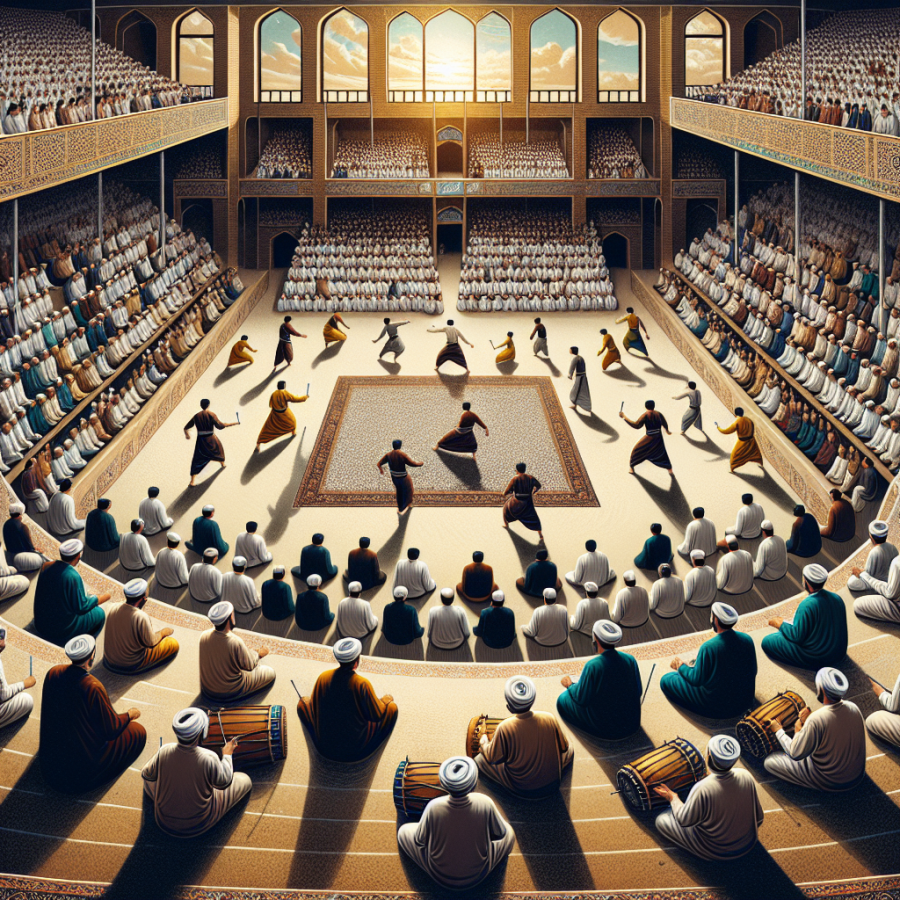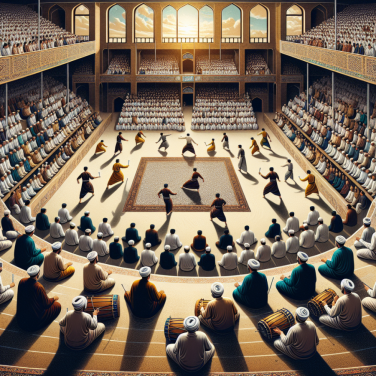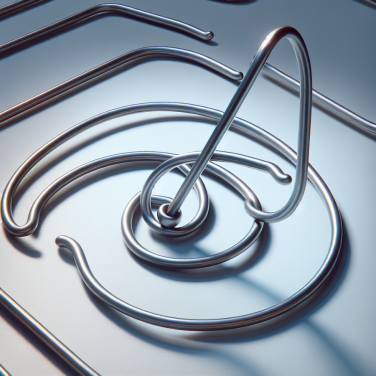Rituals and Exercises of Zourkhaneh: Preserving Iran's Athletic Heritage
Zourkhaneh, which translates to "House of Strength," is not merely a gymnasium. It is a sacred space where athletes come together to practice physical exercises steeped in history and tradition. The rituals and exercises performed in a Zourkhaneh are designed to build strength, agility, and moral character. They are deeply interwoven with Iran's cultural and historical identity, with roots that can be traced back to the ancient Parthian and Sassanid empires.
Upon entering the Zourkhaneh, one is immediately struck by its distinctive architecture. The octagonal or circular shape of the room is symbolic, representing the world, with the Gaud (a raised platform resembling a sundial) in the center symbolizing the sun. Athletes, known as Pahlavans, gather around the Gaud and engage in a variety of unique exercises under the guidance of the Morshed, a master instructor who not only directs the workouts but also instills spiritual inspiration through the playing of traditional instruments like the Zarb (drum) and the singing of epic poetry.
One of the first rituals to observe is the practice known as 'Suru,' an act of humility where each athlete performs a ceremonial bowing in reverence to the sacred space, their fellow athletes, and their predecessors. This act also serves as a warm-up, promoting flexibility and mental focus.
The most fundamental exercise in the Zourkhaneh is the 'Mil,' which refers to the practice using wooden clubs of various weights. These clubs, called Meels, resemble oversized bowling pins, and athletes swing them in complex patterns that develop shoulder strength, coordination, and endurance. Meel swinging is a rhythmic activity that can be almost meditative, as the athletes synchronize their movements with the beat of the Morshed's drum.
Following the club swinging, athletes may engage with the 'Sang,' large shields made of stone or metal that are lifted and maneuvered to develop arm, back, and chest muscles. This exercise is not just about raw strength but also technique and stability.
Another exercise is the 'Gereh,' a form of wrestling that hones skills like balance, grappling, and body control. Above all, Gereh emphasizes fair play and respect among the competitors, reflecting the moral and ethical code upheld in Zourkhaneh traditions.
The 'Kabbadeh' workout involves a bow-shaped metal instrument with numerous small bells attached.
Read also:
Brushstrokes in Blockchain: Artists Embrace NFT Revolution
Exploring the Roots of Zourkhaneh: Iran's Historical House of Strength
Zourkhaneh, translating to "House of Strength," is a fascinating term that evokes the spirit of traditional athletics in Iran. This ancient practice, also known as Varzesh-e Pahlavani, is deeply intertwined with Iranian culture, history, and even spirituality, showcasing a blend of physical prowess, chivalry, and poetic wisdom.
The origins of Zourkhaneh can be traced back to the Parthian Empire, over 2,000 years ago, where it began as a form of training for warriors to prepare for battle. However, it was during the Safavid era, particularly in the 16th century, that Zourkhaneh saw a major resurgence and became a symbol of Iranian identity and resistance against foreign invaders, such as the Mongols and the Arabs. The ethos of Zourkhaneh was to train heroes (Pahlavans) who would be capable not only in physical strength but also in moral virtues and wisdom.
With the rise of Islamic influence in Iran, Zourkhaneh managed to incorporate spiritual aspects as well. One of the most prominent figures in Zourkhaneh history is the legendary Pahlavan (champion) Pourya-ye Vali, whose teachings married the athletic aspects of the practice to Sufi philosophy. The exercises and rituals performed in the Zourkhaneh were believed to be acts of worship and ways to reach spiritual enlightenment, whereby the physical body was strengthened to serve as a vessel for divine energy.
Inside the Zourkhaneh, athletes would engage in various exercises that mimicked real-life combat moves and were intended to promote physical strength and agility. These exercises include rhythmic and dynamic movements using traditional equipment such as the 'Meel' (club-bells), 'Sang' (shields), 'Kabbadeh' (a bow-shaped iron weight), and 'Zarbedar' (leather strap) for conditioning. Participants move to the sounds of live drumbeats and the recitation of poetry and stories, giving the space a unique atmosphere that is both intense and meditative.
Traditionally, the Zourkhaneh was led by a Morshed or a master who controlled the rhythm of the exercise with a drum, called the Zarb, and provided guidance through verses from the Shahnameh, the Persian Book of Kings, or verses by famous poets like Rumi.




